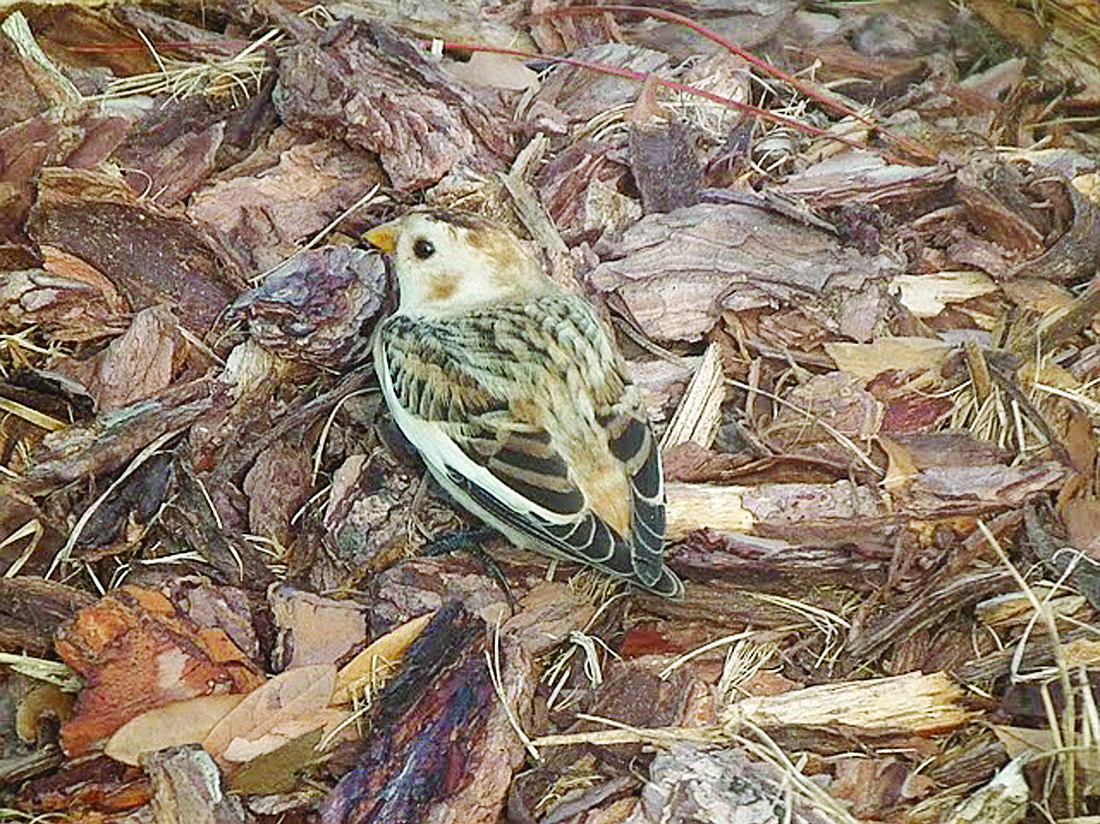- April 22, 2024
-
-
Loading

Loading

A snow bunting, likely from the Arctic, attracted more than 100 visitors from as far as Maryland.
It was a rainy day in early December. Palm Coast Senior Environmental Planner Denise Bevan, Flagler Audubon President Neil Davies and an impassioned bird photographer from South Florida stood near the gazebo at Waterfront Park, observing a small brown-and-white bird that is usually only ever seen 1,000 miles to the north.
“(The photographer) had this crazy expensive camera, and we were all getting wet, and it didn’t even faze us,” Bevan recalled. “We got into this discussion … and I was awestruck at how important it was in that moment.”
Davies and Bevan decided that roping off a section of the sidewalk in the popular park would encourage people to avoid the area and also give birders a sign so they could locate the snow bunting. Bevan said the city wanted to be good stewards of the environment.
“A true snow bird,” City Manager Jim Landon said in an e-mail to his staff. “This feathered friend is supposed to be in Canada … but I don’t blame him/her for wanting to enjoy our great new park.”
Snow buntings breed in the spring in the Arctic, where the temperatures can still be as low as 20-below. In the winter, snow buntings travel to southern Canada and the northern United States. They are the first birds to fly north again. This particular bird’s identification was confirmed by several independent bird experts, Bevan said.
Davies said that, while the he was here, the bird appeared to be healthy and feeding, but that it had lost its tail feathers and the ability to fly long distances.
Since then, after a month or so in Palm Coat, the bird was seen taking short flights, Bevan said.
In four weeks at Waterfront Park, the bird regrew his feathers (see photos above to compare before and after). He hasn’t been seen in the area since Jan. 3.
“Almost within days of him having a full set of feathers, he’s gone,” Davies said. “Our optimistic expectation is that he’s flown north and run into his friends … That is a bit of a fairy’s story, but it’s a nice way of looking at it.”
Davies said the bird attracted more than 100 visitors from around the state and beyond — as far as Ohio and Maryland. One visitor speculated the bird got lost and began flying with a flock of similar-looking sparrows flying to Florida.
At times, crowds of several people with birding equipment and high-powered zoom lenses gathered “like a gang of paparazzi” at the roped-off area for a once-in-a-lifetime chance to see the bird far from its natural habitat, Davies said.
“Some bird watchers go into crazy secluded spots … just to have a glimpse of something that’s unique,” Bevan said. And yet, she added, the snow bunting landed in a visible spot, for all to see.
“It’s almost like he wanted to come and put a show on for us,” she said.
Eric Draper, executive director of Audubon of Florida, praised the city for its efforts to keep the snow bunting safe, saying Palm Coast is “truly a bird-friendly city.”